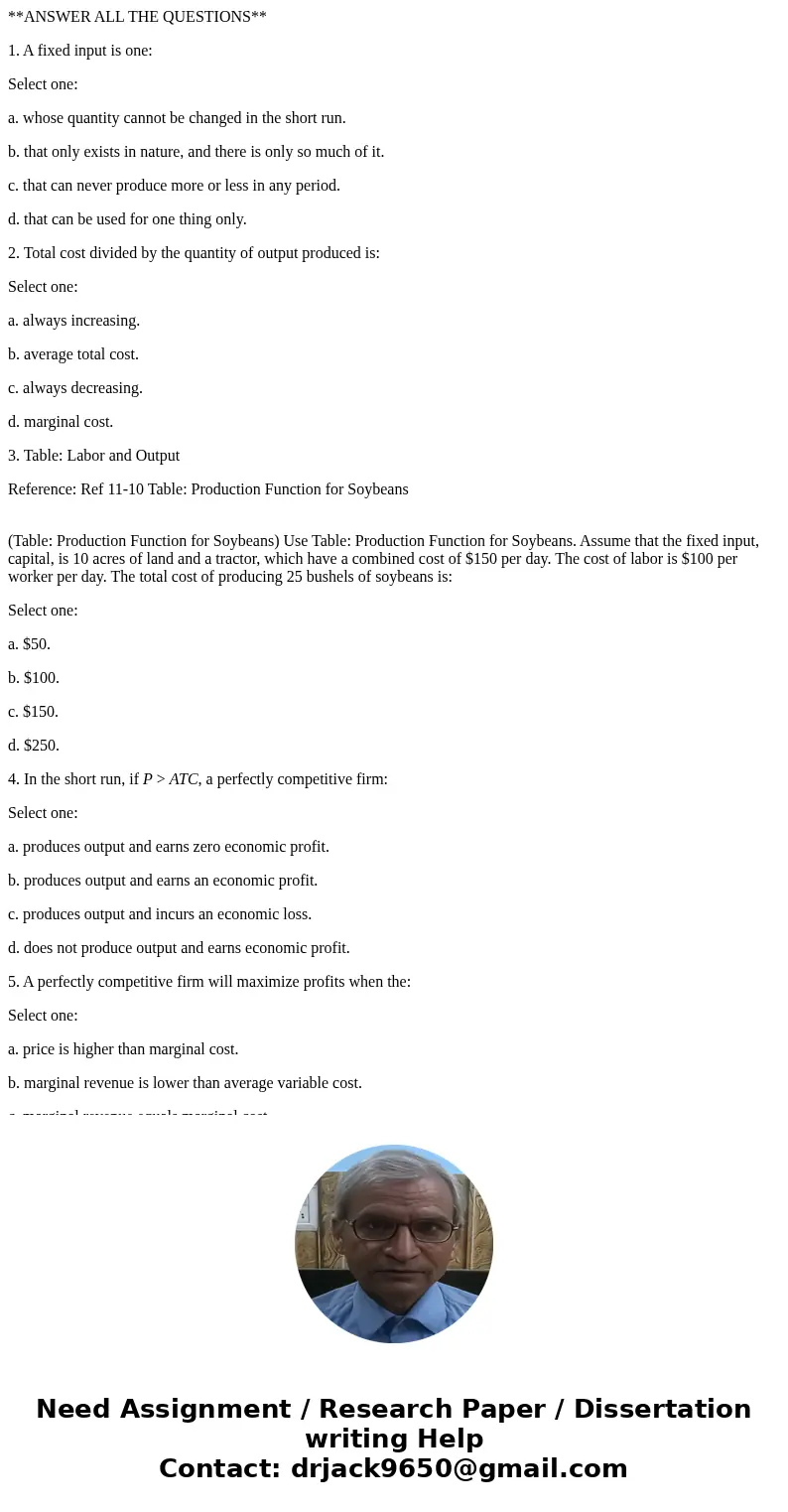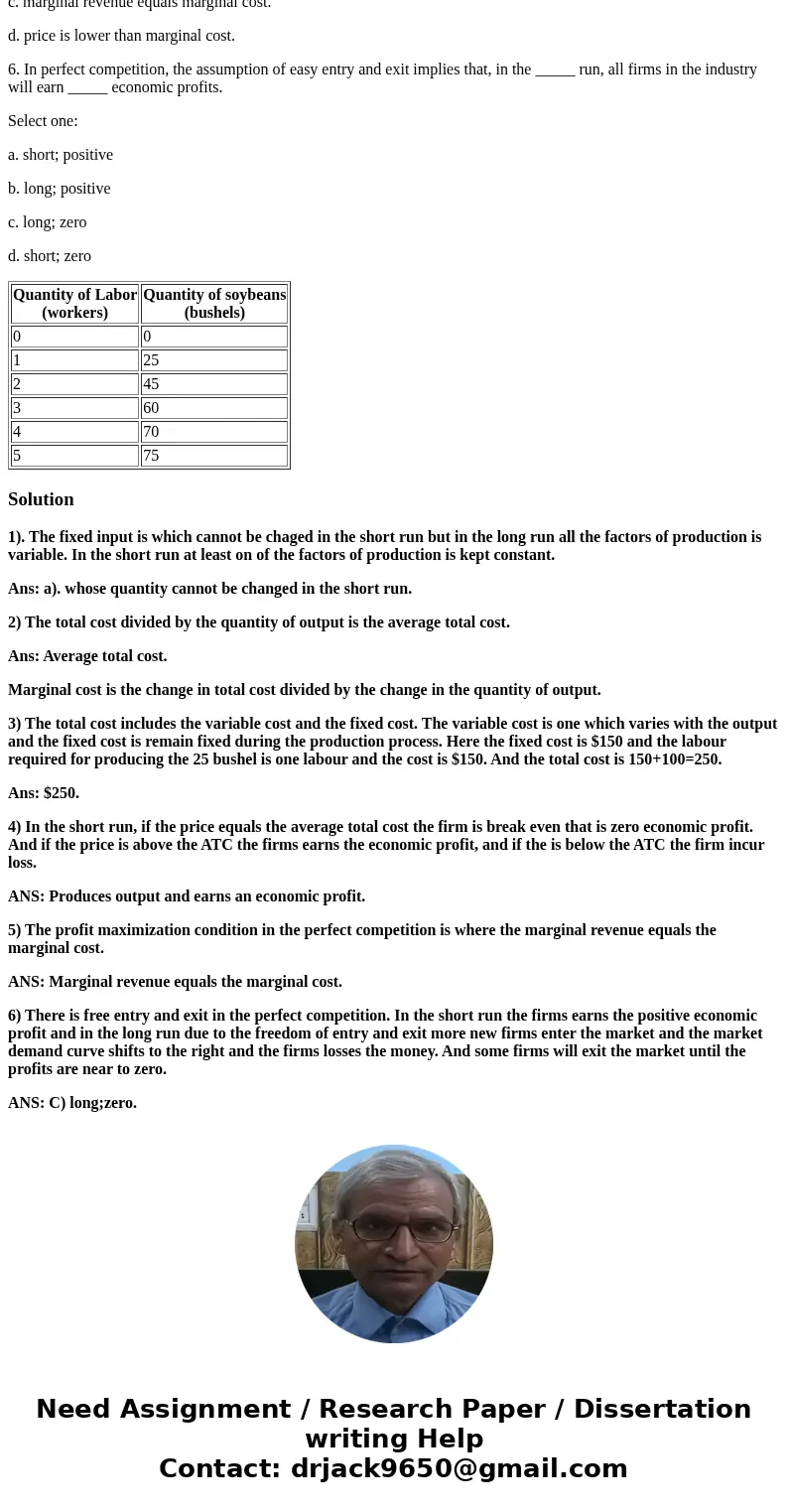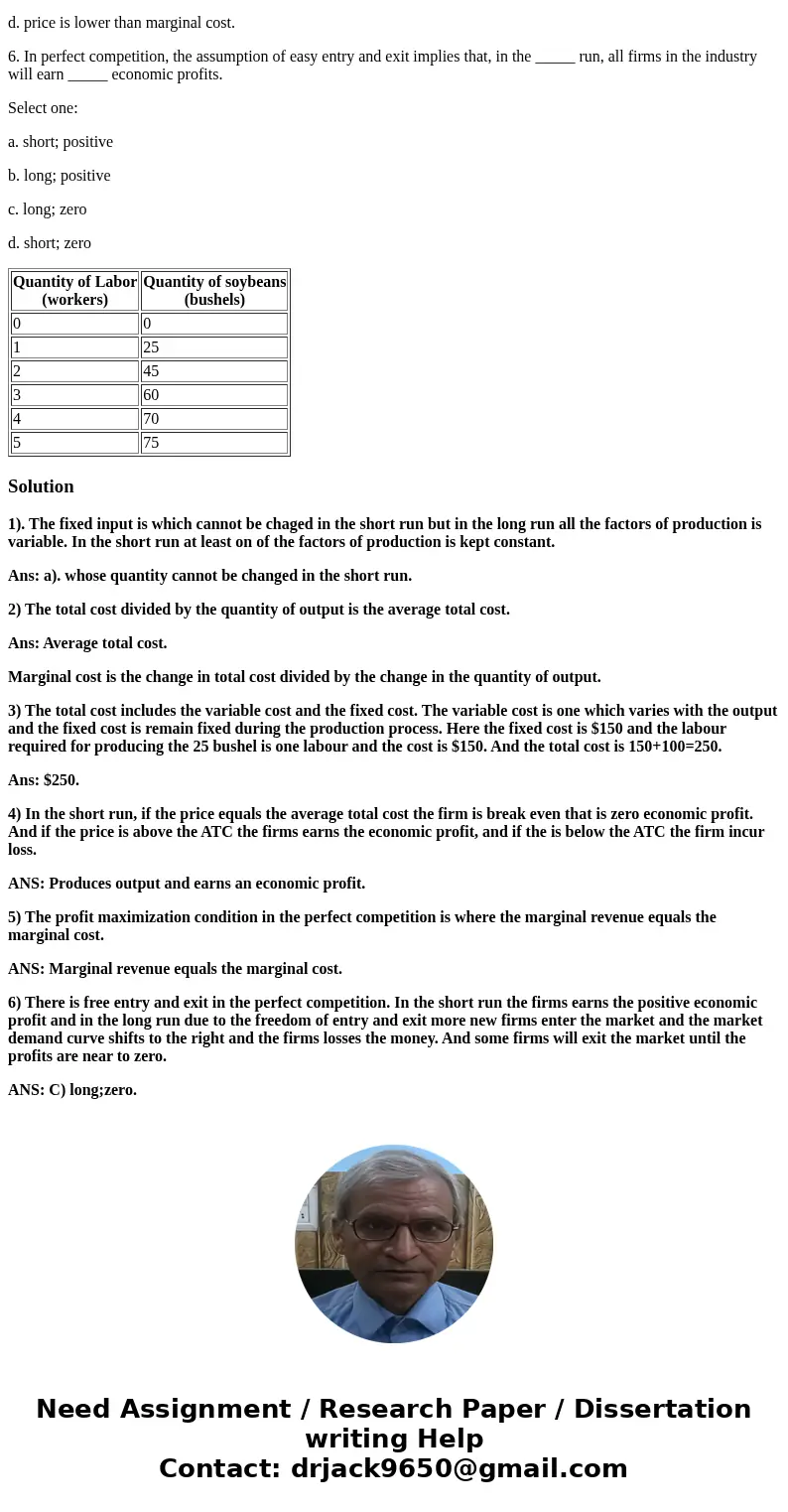ANSWER ALL THE QUESTIONS 1 A fixed input is one Select one a
**ANSWER ALL THE QUESTIONS**
1. A fixed input is one:
Select one:
a. whose quantity cannot be changed in the short run.
b. that only exists in nature, and there is only so much of it.
c. that can never produce more or less in any period.
d. that can be used for one thing only.
2. Total cost divided by the quantity of output produced is:
Select one:
a. always increasing.
b. average total cost.
c. always decreasing.
d. marginal cost.
3. Table: Labor and Output
Reference: Ref 11-10 Table: Production Function for Soybeans
(Table: Production Function for Soybeans) Use Table: Production Function for Soybeans. Assume that the fixed input, capital, is 10 acres of land and a tractor, which have a combined cost of $150 per day. The cost of labor is $100 per worker per day. The total cost of producing 25 bushels of soybeans is:
Select one:
a. $50.
b. $100.
c. $150.
d. $250.
4. In the short run, if P > ATC, a perfectly competitive firm:
Select one:
a. produces output and earns zero economic profit.
b. produces output and earns an economic profit.
c. produces output and incurs an economic loss.
d. does not produce output and earns economic profit.
5. A perfectly competitive firm will maximize profits when the:
Select one:
a. price is higher than marginal cost.
b. marginal revenue is lower than average variable cost.
c. marginal revenue equals marginal cost.
d. price is lower than marginal cost.
6. In perfect competition, the assumption of easy entry and exit implies that, in the _____ run, all firms in the industry will earn _____ economic profits.
Select one:
a. short; positive
b. long; positive
c. long; zero
d. short; zero
| Quantity of Labor (workers) | Quantity of soybeans (bushels) |
|---|---|
| 0 | 0 |
| 1 | 25 |
| 2 | 45 |
| 3 | 60 |
| 4 | 70 |
| 5 | 75 |
Solution
1). The fixed input is which cannot be chaged in the short run but in the long run all the factors of production is variable. In the short run at least on of the factors of production is kept constant.
Ans: a). whose quantity cannot be changed in the short run.
2) The total cost divided by the quantity of output is the average total cost.
Ans: Average total cost.
Marginal cost is the change in total cost divided by the change in the quantity of output.
3) The total cost includes the variable cost and the fixed cost. The variable cost is one which varies with the output and the fixed cost is remain fixed during the production process. Here the fixed cost is $150 and the labour required for producing the 25 bushel is one labour and the cost is $150. And the total cost is 150+100=250.
Ans: $250.
4) In the short run, if the price equals the average total cost the firm is break even that is zero economic profit. And if the price is above the ATC the firms earns the economic profit, and if the is below the ATC the firm incur loss.
ANS: Produces output and earns an economic profit.
5) The profit maximization condition in the perfect competition is where the marginal revenue equals the marginal cost.
ANS: Marginal revenue equals the marginal cost.
6) There is free entry and exit in the perfect competition. In the short run the firms earns the positive economic profit and in the long run due to the freedom of entry and exit more new firms enter the market and the market demand curve shifts to the right and the firms losses the money. And some firms will exit the market until the profits are near to zero.
ANS: C) long;zero.



 Homework Sourse
Homework Sourse